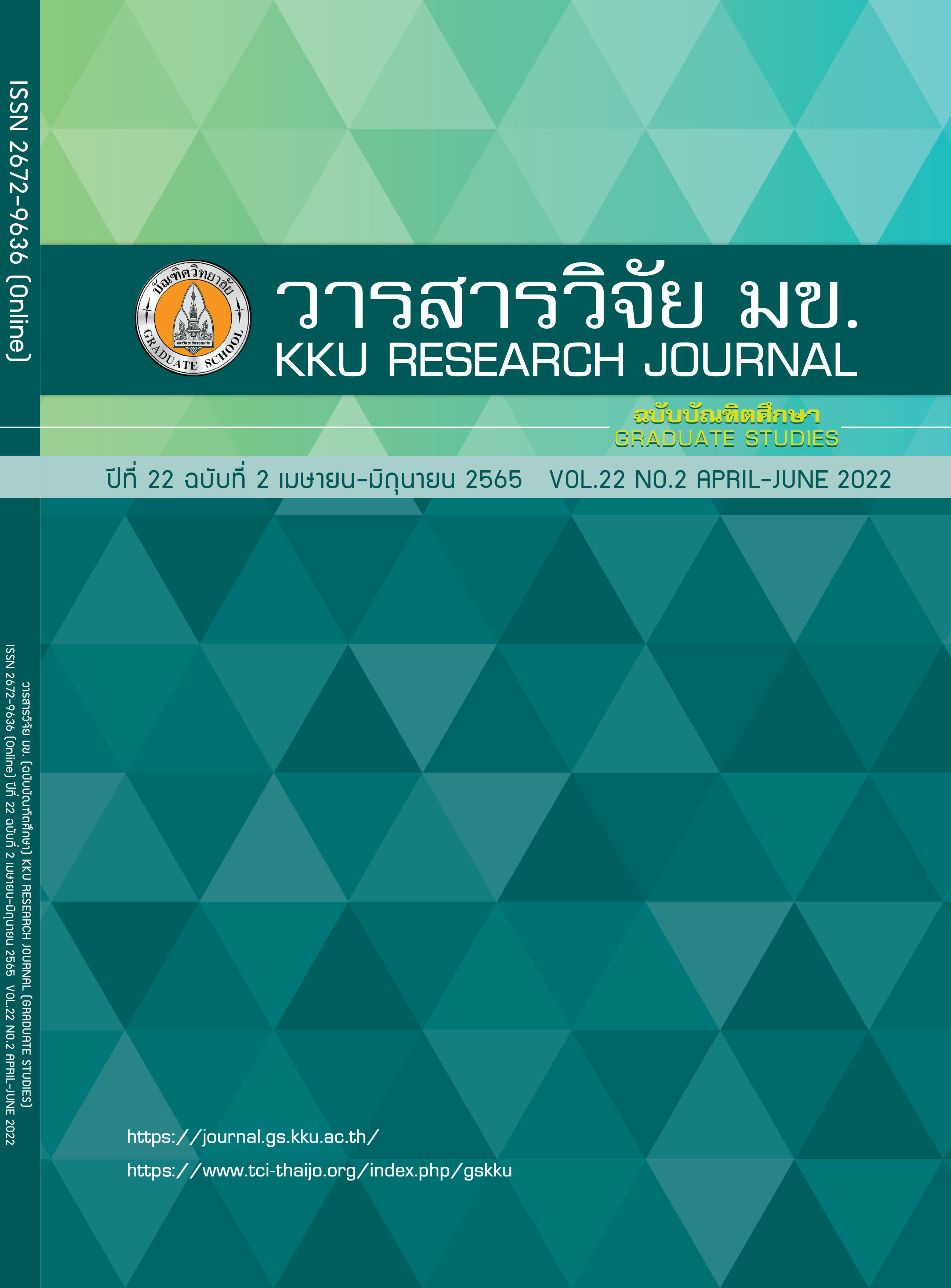Evaluation Study on Start-up Lost Time Reduction of Exclusive Stopping Space for Motorcycle at Signalized Intersections
Keywords:
Start-up lost time, Exclusive stopping space for motorcycle, Signalized intersectionAbstract
The objective of this study is to evaluate the exclusive stopping space for motorcycle at signalized intersection on reducing a start-up lost time due to a change of motorcycle’s stopping position. Three signalized intersections were selected as the study intersections, including the in front of Ubon Ratchathani University intersection in Ubon Ratchathani Province, the Phayu Intersection in Sisaket Province, and the Ban Phai Intersection in Khon Kaen Province. The study results found after a construction of an exclusive stopping space for a motorcycle at signalized intersections, lanes with a high number of stopping motorcycles and high rate of motorcycle stopping in exclusive stopping space during red time significantly achieved a reduction of start-up lost time of traffic. The study on relationship
between the stopping position and start-up lost time found that intersection with exclusive stopping space for motorcycle and a red time cycle with higher number of motorcycles stopping in exclusive stopping space for motorcycle or in area behind the stop line and in front of a vehicle queue resulted in lower start-up lost time of traffic. In contrast, intersection without exclusive stopping space for motorcycle and a red time cycle with higher number of motorcycles stopping in the vehicle queue resulted in higher start-up lost time of traffic.
References
Transportation Statistics Group, Department of Land Transport. Cumulative number of registered vehicles [Internet]. 2020. Available from: https://web.dlt.go.th/statistics
Kuenpet P, Kuntawong N, Saensiribanphot E. Study of motorcycle parking behavior at signalized intersection case study of the intersection in front of Ubon Ratchathani University. 2018.
Bureau of Highway Safety, Department of Highways. Recommended specific areas for bicycles and motorcycles at the intersection (Bike Box) [Internet]. 2018. Available from: https://bhs.doh.go.th
Wall GT, Davies DG, Crabtree M. Capacity implications of Advanced Stop Lines for cyclists - Prepared for Charging and Local Transport Division, Department for Transport. 2003;TRL Repor:1–52.
Minh CC, Sano K. Analysis of Motorcycle Effects To Saturation Flow Rate At Signalized Intersection in Developing Countries. J East Asia Soc Transp Stud. 2003;5(10):1211–1222.
Rongviriyapanich T, Supattrakul C. Effects of motorcycles on traffic operations on arterial streets. 2004.
Jirasak P, Yamploy K, Iti-Amorn R, Sukwimolseree T, Suriyavanagul P. A study of effects count-down signal type signalized intersection. 2004.
Bester CJ, Meyers WL. Saturation flow rates. SATC 2007 - 26th Annu South African Transp Conf Challenges Implement Policy. 2007;(July):560–8.
Dill J, Monsere CM, McNeil N. Evaluation of bike boxes at signalized intersections. Accid Anal Prev. 2012;44(1):126–134.
Satiennam T, Seedam A, Radpukdee T, Satiennam W, Pasangtiyo W, Hashino Y. Development of on-road exhaust emission and fuel consumption models for motorcycles and application through traffic microsimulation. J Adv Transp. 2017.
Sutandi AC, Siregar DD. Evaluation of Exclusive Stopping Space for Motorcycle at Signalized Intersections in Large Cities in Indonesia. MATEC Web Conf. 2017;103:4–11.
Transportation Research Board (TRB). Highway Capacity Manual 2000. Washington D.C; 2000.
Downloads
Published
Issue
Section
License
Copyright (c) 2022 KKU Research Journal (Graduate Studies)

This work is licensed under a Creative Commons Attribution-NonCommercial-NoDerivatives 4.0 International License.



